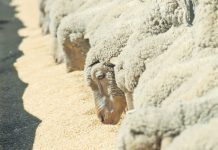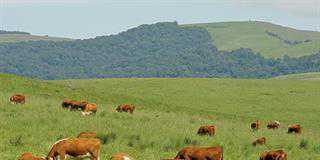
The main reason that slangbos (Seriphium plumosum) is not grazed is that once old, it becomes hard and unpalatable. However, a farming couple has found that if this old material is burnt off, the regrowth is palatable to animals during winter – more so than the low-quality grass available after the frost.
Willem and Christine Cronje of the farm Leeuwfontein, near Zastron, noticed that their animals sometimes nibbled at relatively young slangbos. This led to the Cronjes, along with Winston and Lynne Trollope from Working on Fire, and Justin du Toit from the Grootfontein Agricultural Development Institute, to come up with the hypothesis that animals will selectively graze slangbos provided that:
- The slangbos has been burnt within the past three years;
- The surrounding grass has been frosted and is of low-quality; and
- The cattle need to increase their protein intake.
Research
In June 2004, Willem let oxen into a camp infested with slangbos, which had been burnt about three years previously. The effects were beyond expectation; not only did the animals graze the slangbos, but for the first couple of days, it was all they grazed. The results can be seen on the YouTube video ‘Cattle grazing slangbos’.
Winston, who has been conducting research into fire, grazing and bush control for nearly 50 years, notes that once a woody species has been burnt down by a fire, animals (livestock or game) are often able to keep it from growing back to its original size. He has found the same effect on farms in the Eastern Cape, in the Kruger National Park, and in other African countries.
He maintains that fire can be a valuable tool for farmers, but cautions that they have to be careful when burning veld, and that the assistance of an expert should be sought.
Additionally, he notes, it is better to graze the slangbos with oxen to avoid the risk of pregnant cows eating a low-protein diet. Further trials to confirm these findings are currently being established at other sites.
Source: Justin du Toit’s YouTube Channel













